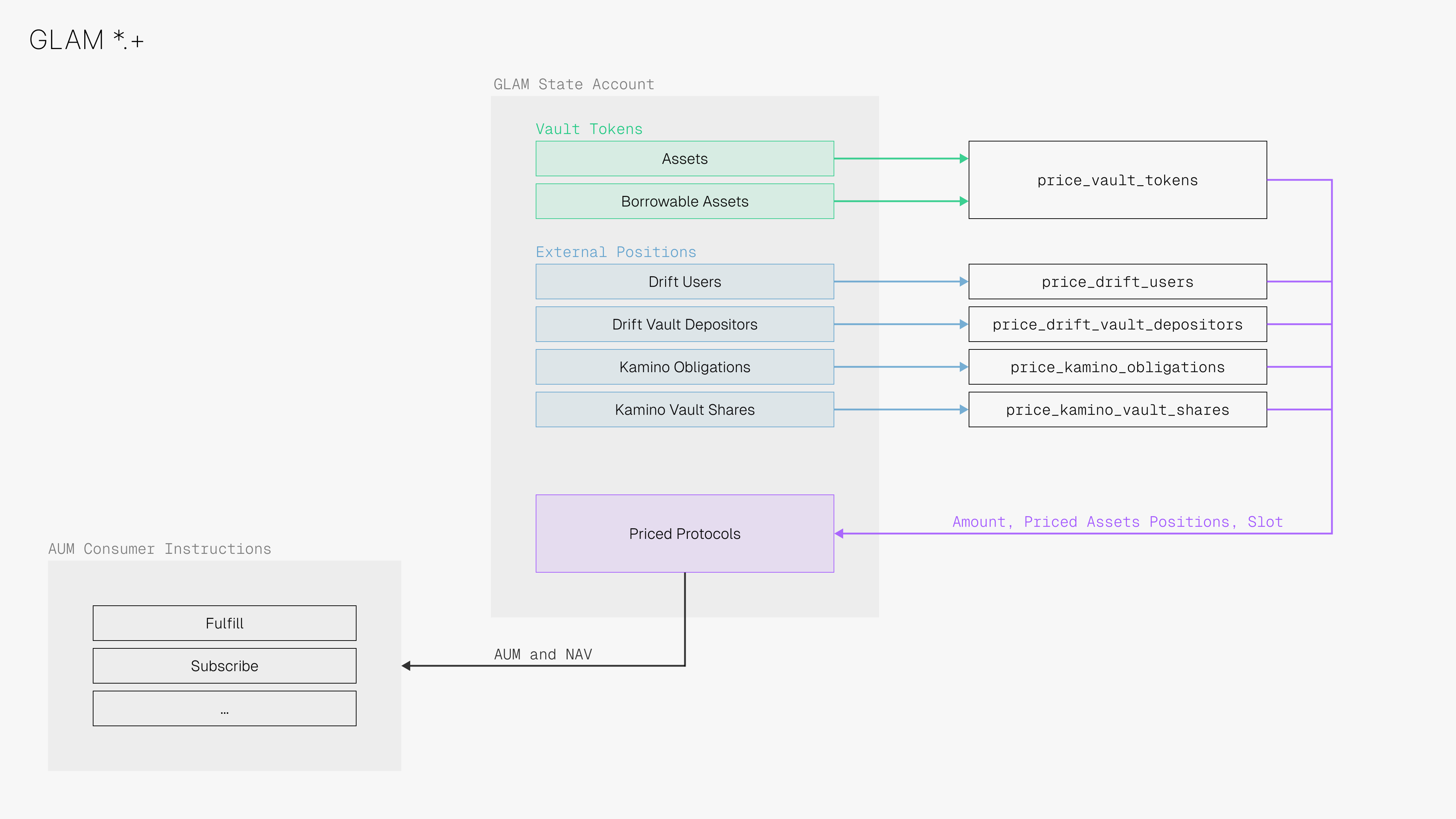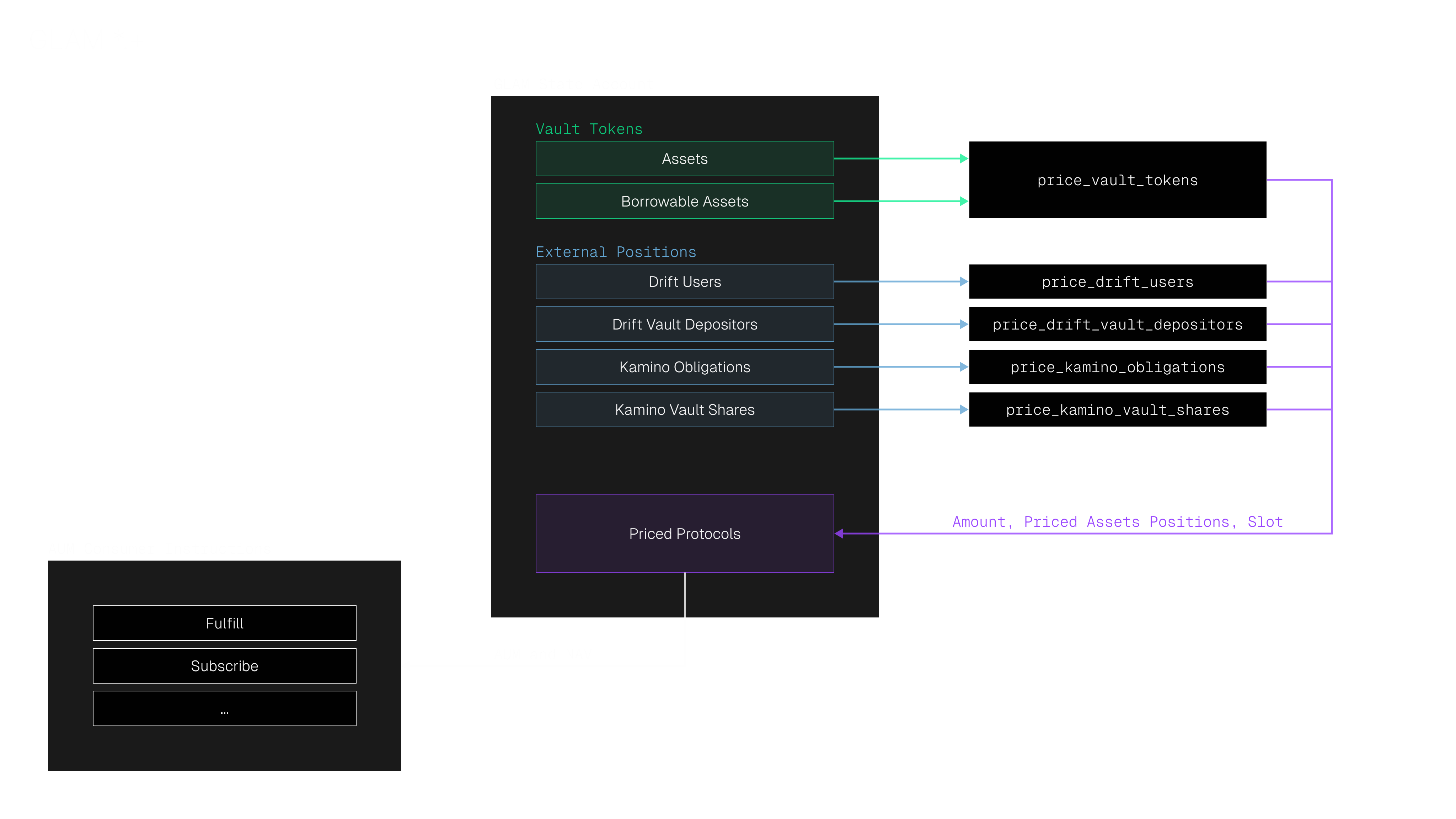Where:
- is the value of each individual token held by the vault
- is the value of each individual position in Drift Vaults
- is the value of each individual position in Kamino Lending
How Pricing Works


- Any transaction that requires AUM must include price instructions for all enabled protocols. These instructions save per-protocol price data to the GLAM State Account’s
PricedProtocolsfield. - AUM is calculated by summing the valuations in
PricedProtocols. Validations ensure all vault assets and positions use fresh oracle data. - NAV (Net Asset Value) is calculated as AUM divided by the total share supply.
- For subscriptions, the number of shares to issue is calculated from NAV and the subscription amount, subject to applicable fees.
- For redemptions, the payout amount is calculated from NAV and the number of shares being redeemed, subject to applicable fees.
Functional Pricing for LSTs
For liquid staking tokens (LSTs), GLAM uses functional pricing whenever possible. Each LST (like mSOL, jitoSOL, bSOL, etc.) represents a claim on staked SOL plus staking rewards, therefore they have an intrinsic value backed by SOL in the pool. The conversion rate can be calculated onchain from the LST’s pool state account: With the conversion rate, the functional price of the LST can be calculated as:Benefits of Functional Pricing
- Depeg Protection: Protects users from temporary market depegging events where LST spot prices may trade below their intrinsic value
- Accurate Valuation: Reflects the true underlying value based on staked SOL and accrued rewards, not market sentiment
- Reduced Manipulation Risk: Eliminates the risk of oracle manipulation or flash loan attacks on LST spot prices
- Consistent Pricing: Provides stable, predictable pricing that follows the actual staking yield mechanics
- Fair Entry/Exit: Ensures users receive fair value when subscribing to or redeeming from vaults holding LSTs